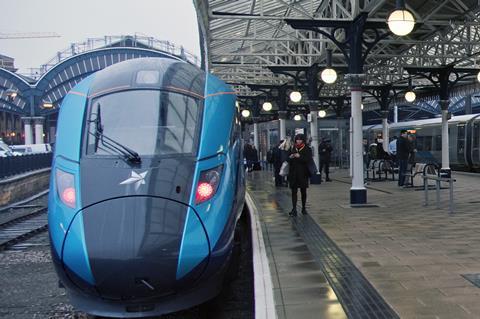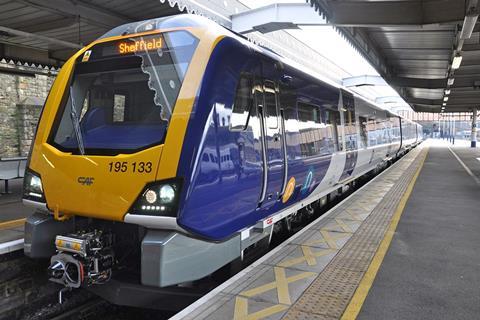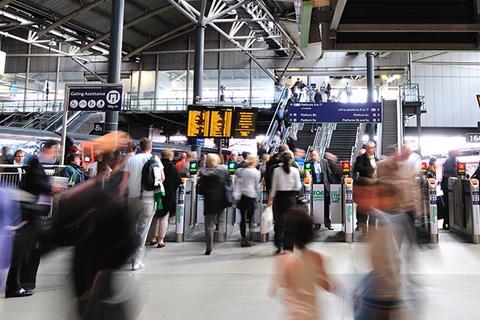
UK: Opportunities for Transport for the North to take an active role in shaping the post-pandemic development of the rail sector were discussed at the Rail North Committee meeting on January 12, along with potential changes to fares and ticketing.
The TfN executive has produced a paper making clear what it has fed into the Williams Review, which is now expected to be published by spring, and also setting out the role the body could play to support local authorities with the delivery of their ambitions at their own pace.
TfN Strategic Rail Director David Hoggarth said this was a ‘roadmap to recovery’, developed in response to the need for a plan to ensure people can be encouraged back to rail when the time is right.
He noted that significant government funding is being used to keep services running, which is welcome but presents a potential ongoing challenge.
‘It is something like three times the amount of subsidy that was going into some of the old franchises for a much reduced number of passengers’, he said. ‘So clearly, sustainability in the long term is about building that demand and patronage back up and bringing in more revenue to offset that significant subsidy.’
The paper covers six key themes:
- Recovery of demand: how quickly services can be stepped back up and having a plan to do so;
- Rebuilding confidence: planning communications as well as promotions to encourage people back to rail;
- Fares and ticketing: with methods of payment to meet passenger needs such as flexible season tickets and pay-as-you-go and bank card options;
- Improved performance: ensuring that the current performance improvements while services are reduced are not lost, with a focus on resilient timetables which can be supported by the infrastructure;
- Sustainable growth: promoting the use of rail, to particularly car drivers and in the morning peak;
- Investment: infrastructure and ticketing to get the railway on a more sustainable long-term footing.
Phased approach
Rail North Committee Chair Councillor Liam Robinson said the Covid-19 crisis had led to some of the best industry collaboration seen in recent times, but issues such as the change from franchise agreements to other forms of contract had highlighted the challenges of centralised decision making.

‘In the light of that, we are suggesting that a phased approach to further, deeper devolution is probably the sensible way to go, given the uncertainty’, he said. ‘We’ve been waiting for a very long time for the Williams report to find its way into a white paper from government. And it is vital that we have a very strong response.’
He said ‘none of us would ever tolerate a situation of going back to a situation where rail services were being decided by diktat in Whitehall, because quite frankly, those models just didn’t work in the past. So we need to have something that’s certainly more focused on the needs of local people and local businesses.’
Fares reform
Supported by many members of the committee, Robinson also suggested that there is a need to simplify ticketing to encourage passengers back. ‘If we are going to encourage people back on, it’s got to be really good value. Simple as that’, he said.
Leeds City Council leader Judith Blake also emphasised the need to respond to what industry insiders suggest is a reluctance by DfT to look at fare reductions as a way to restore passenger confidence, with Rail Minister Chris Heaton-Harris having justified the March fare increase as ‘ensuring that taxpayers are not overburdened for their unprecedented contribution’.

‘I want to make sure that DfT really takes seriously the need for a flexible ticketing model. And that we have that as one of our priorities so that we don’t put people off from using the train’, Blake emphasised.
Following the meeting, Rail Business UK asked Hoggarth whether DfT would be pressed to look further at fare offers. ‘Our members have made clear that they want to see incentives for passengers and car users to encourage a return to rail when the time is right as we work to promote sustainable travel’, he replied. ‘For rail to be attractive it has to be seen as reliable, offering good connectivity, easy access, a quality product and be value for money.
‘We will almost certainly see different patterns of travel as we emerge from this pandemic and we if want to make rail a travel-mode of choice we have to make the rail offer viable. That will include offering flexible tickets and ensuring it can effectively compete with other travel choices.’



